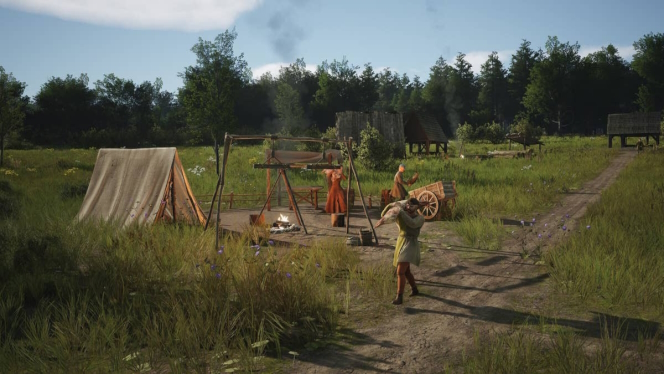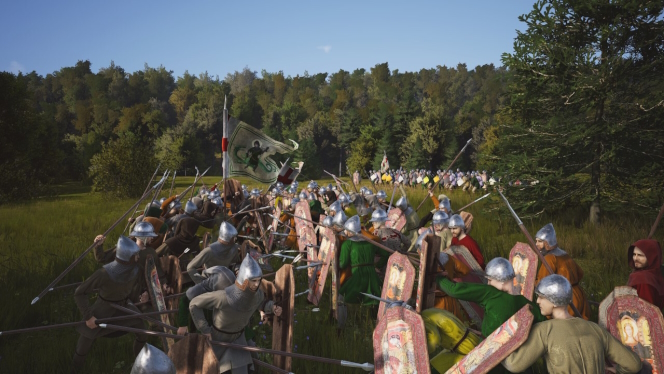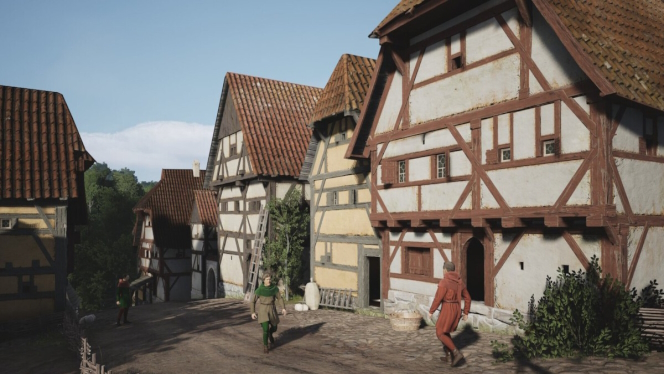Manor Lords, one of the year’s most anticipated city builder/RTS, was recently released in early access and is available on Game Pass.
Although it started as a single developer’s project of love and was surrounded by many doubts, Manor Lords has finally arrived in early access on PC. Slavic Magic’s real-time strategy, city-building and management game – which you can learn more about in our test tomorrow – is not as massive as you might think, but it is dense and complex. We have to learn a lot of ideas and mechanics to build the best city (or rather village…) of the Middle Ages. So, here are some things I wish I had known before I started the game!
Don’t rush the military!
Unless you’re specifically playing the “On the Edge” scenario, you don’t need to rush building your military forces. It’s wise to field the first militia unit, as you’ll need some protection against bandit camps and raiders. However, spending a lot of resources on crafting armour and weapons can lead to disaster.
Instead, focus on survival first! You have a startup community and a few families working in critical industries and need to expand. Grow the economy first and foremost to ensure that food and capital flow into your starting city. It’s worth investing in your army once the economy is up and running.
Food production is a priority
In the early game, you have a few food sources to sustain your community. You will primarily bring in berries from a Forager Hut and meat from a Hunting Camp. If both work together, it should provide enough food for a small settlement to thrive. But as you start building more Burgage Plots and new families move into the area, you’ll find that two resource-gathering structures won’t be enough.
You will inevitably need to lay down a farmhouse and at least one field where you can plant crops. Wheat, barley, and flax are available in the first round. Wheat becomes flour, which becomes bread. It is a crucial food to sustain a growing population. But on occasion, you need to turn your fields fallow to promote fertility.
Build strategically!
While it’s fun to build our villages aesthetically, sometimes you need to focus more on efficiency than looks. For example, it is worth placing various wooden constructions in the immediate vicinity of forests. Next to them are the warehouses.
This layout reduces the overall time workers spend walking from one building to another to pick up or deliver resources, all within walking distance of a warehouse!
The same applies to the food industry, which must be close to the granary. It makes sense to place all jobs in a way that reduces travel time and increases efficiency to keep different industries alive.
Preparation for winter
Although focusing on the “here and now” during a city-building game is easy, you need to think strategically. What’s beyond the horizon? In a strategy game with survival elements, you must consider the snowfall threat. A harsh winter can leave your community without food or firewood.
Many of the wilderness’s crops and resources follow a strict seasonal rotation. For example, berries harvested by the Forager Hut will not be produced during the winter. Hunting Camps can still get some meat, but it’s usually not enough to sustain a thriving settlement.
It’s time to prepare for winter at Manor Lords! Expanding your farmland is worth it; additional types of food must be purchased, and trade should also be developed.
You can never have enough oxen
Oxen are the real MVPs in Manor Lords, as these tough creatures can plough fields and transport goods, including heavy logs, for construction. With default settings, you start a new game of Manor Lords with a single ox; this ox will struggle to cope with all the construction work. Fortunately, however, as a starting seed, it immediately allows (also with the standard settings) to buy another ox immediately.
Since the merchant only becomes available every 30 days, it’s essential not to wait too long before getting the second one.
An ox without a stall can still be used for work and will not start wandering for a while after it arrives. We’ll have plenty of time to build a second pile for the price of one log. A little later in the game, we can turn the hitching posts into stables and get more animals when we have a sawmill.
There is no life without Tannery
Are you ready to place your first industrial building? It’s best if it’s a Tannery since the Hunting Camp probably provided enough resources (animal skins) to start leather production immediately. We can use this to get more choices in the markets. In addition, it is also essential to achieve the clothing requirements for the Burgage Plot Level 2 upgrade. This is the easiest way to secure clothing early in the game.
In comparison, clay roof tiles would require a significant investment of regional wealth before they could be exported, and creating other types of clothing or weapons would usually require several steps.
The tannery creates a profitable production chain that requires nothing more than the standard early hunting camp so that we can start this industry early enough. After reaching Burgage Plot level 3, we can build a Cobbler’s Shop backyard extension where shoes are made from leather, which can be sold in the market for a good profit.
Source: Reddit


















Leave a Reply